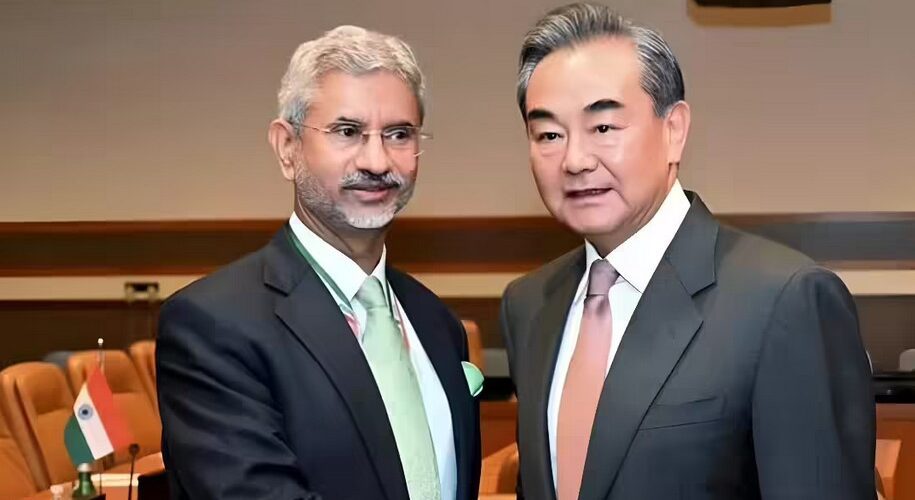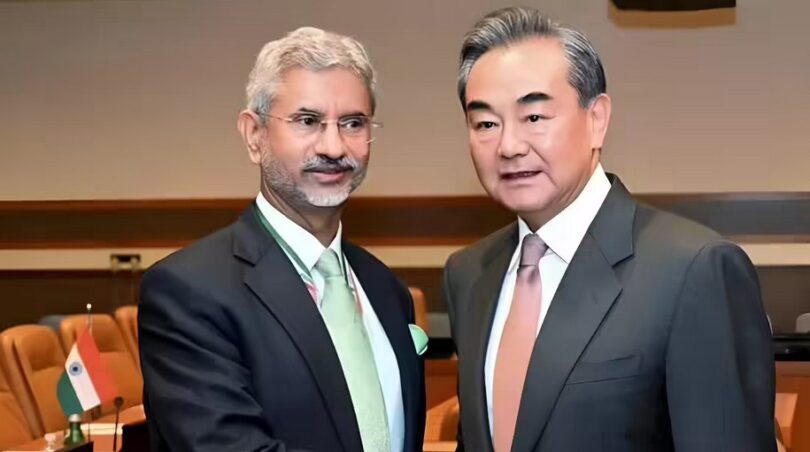India's External Affairs Minister S. Jaishankar has reaffirmed that there has been "no change" in India's stance on Taiwan, following a meeting with his Chinese counterpart, Wang Yi, in August 2025. The clarification followed after the Chinese Foreign Ministry's readout of the meeting. According to the read out, Beijing claimed that Jaishankar had regarded Taiwan as "a part of China".
Soon after China's claim was reported, Indian government clarified that India's policy on Taiwan continues to be unchanged.
While India does not recognize Taiwan officially, it continues to maintain its relations on economic, technological, and cultural level.
In response to Beijing, New Delhi directly denied Beijing's claim. Post New Delhi’s reaction, the Chinese Foreign Ministry expressed "surprise" at India's clarification and has admonished individuals in India who they believe are trying to "undermine" China's sovereignty over Taiwan.
It is evident that India has carefully calibrated "strategic ambiguity" on the Taiwan issue, given the unpredictable nature of China in regards to its diplomatic relations with India and close ties with Islamabad.
India has not reaffirmed the "One-China" policy in joint statements with Beijing since 2008. This had become a prime factor in protest of China's practice of issuing "stapled visas" to residents of Arunachal Pradesh (AP) and Jammu and Kashmir (J&K). Given the development, the hypocrisy in censuring India for its lack of acknowledgement of Beijing’s suzerainty of Taiwan while it undermines India’s sovereignty in regards to Arunachal Pradesh, not only appears sanctimonious but exposes Beijing’s duplicity.

The matter of China issuing stapled visas to the citizens of India residing in AP still continues, with no intention to retract its claim on AP.
The idea of stapled visas stem from the fact that Beijing denounces AP as a part of the Indian territory, therefore denying India’s sovereignty of AP.
The stapled visas are separate papers which are either stapled or pinned to the traveller’s passport instead of a permanent stamp, which is affixed in the passport. The problem with such visas is that they can be easily removed, leaving no permanent record of the visit in the passport. This provides India with a serious security risk.
It is evident that issuance of such kind of visa is a clear example of China’s demonstration of disapproval through a diplomatic gesture. The gesture is not to facilitate travel but a political act of not recognizing the traveller’s Indian nationality.
In some cases, China has issued a standard visa for some individuals from Arunachal Pradesh, but this has not been consistent.
China’s claim over "South Tibet"- Arunachal Pradesh:
China refers to the state of Arunachal Pradesh as South Tibet. Beijing claims that the state of AP has always been a part of Tibet historically, hence it must remain under Chinese control. China has based its claims on historical maps and treaties, stating that "South Tibet" or Zangnan (AP as referred to by People’s Republic of China (PRC)) was appropriated into Indian Territory after the independence, without considering its historical relation to Tibet. The PRC’s rejects the McMahon Line, which established the border between British India and Tibet (as per the 1914 Simla Convention) and which now has become the current international border of Arunachal Pradesh.
China has always utilized the Tibetan reference to stake any claim over AP whether it is in regards to linguistic, religious, or cultural similarities with the Tibet Autonomous Region. China already considers Tibet as an integral part of its territory, hence making links with Tibet makes its claims seem viable according to Beijing.
The Zangnan region belongs to China. The Chinese government’s recent effort to standardize the names of some of the places in Zangnan is fully within China’s sovereignty. pic.twitter.com/dAahb3gM9O
— CHINA MFA Spokesperson 中国外交部发言人 (@MFA_China) May 14, 2025
Despite the Chinese claims, local population in the primarily identifies with India and has been under Indian administration since the mid-20th century. Additionally, the modern dynamics of resource access and strategic dominance in Asia have heightened the significance of border areas. Arunachal Pradesh's hydroelectric potential, natural resources, and role as a buffer has become a prime reason for China's persistence on claiming the region.
China periodically releases lists of standardized names for places in Zangnan to execute its claims over the region. This is an act which can be inferred as the Chinese method of propaganda and a way to assert its territorial claims. So far China has released 5 lists of standardized names.
China’s “fifth list” of claimed names for locations in AP was released in May 2025. It renamed 27 locations, including mountains, residential areas, rivers, and other geographical features, claiming this is within its sovereign rights. India has consistently rejected these actions, ridiculing them and reiterating its sovereignty over AP.
The India-China border has seen series of incursions and standoffs, underlining the nature of the bilateral relationship between the two nations.
In 2013, there was a three-week confrontation between the two nations, when the Chinese forces encroached into Indian Territory in the Daulat Beg Oldi area, near the Line of Actual Control in Ladakh (LAC). In 2017, the tensions further escalated during the Doklam standoff. This lasted for two months. The conflict began when China tried to extend a road in the Doklam plateau, an area both China and Bhutan claim as theirs.
India was forced to intervene on behest of Bhutan. Foreseeing it as a threat to its strategic interests, predominantly to the “Chicken’s Neck” Siliguri Corridor, India mobilized its troops which led to a face-off from both sides. Later in 2020, the situation exacerbated along the LAC in the Galwan Valley region of Eastern Ladakh. This led to a deadly hand-to-hand clash between the troops on June 15, 2020. The Galwan clash led to further deterioration in Sino-India relations and triggered a large-scale military standoff.
Eventually, after several rounds of military and diplomatic talks the situation was de-escalated. Partial disengagement followed in some sectors, such as Pangong Tso, but tensions remained high in many areas. The border issue continues to prevalent in Sino-Indian relations, with frequent reports of further minor incursions.
Conclusion
India maintains that Arunachal Pradesh has always been, and will always be, an integral part of the country. China's claim is not supported by international law. In March 2024, the United States recognized Arunachal Pradesh as Indian territory and explicitly opposed China's unilateral territorial claims over the Line of Actual Control (LAC). Despite of the fact that some countries have offered support to India, the border dispute remains a bilateral issue between India and China.
In August 2025, India and China met for the 24th time as Special Representatives on the boundary issue. Following Chinese Foreign Minister Wang Yi's visit to New Delhi in August 2025, both nations have agreed to resume border trade and to find a solution to resolve their differences. Both nations have agreed to resume border trade at three key passes: Nathu La, Lipulekh, and Shipki La. China has lifted restrictions on the export of certain items to India, including rare earth magnets and fertilizers.
The resumption of direct flights, relaxation of visa rules, and expansion of the Kailash Manasarovar Yatra pilgrimage slots were also complied upon.
Wang also extended an invitation to Prime Minister Narendra Modi to attend the Shanghai Cooperation Organisation (SCO) summit in Tianjin, China, later in August. The Indian PM has accepted the offer, giving an intimation of a possible meeting with President Xi Jinping.
However, the matter of China explicitly trying to manoeuvre the talks into forcing Delhi to acknowledge its sovereignty over Taiwan has failed. It has tried to censure India for its ambiguous stance in completely recognizing its suzerainty over Taiwan. This reflects poorly on Beijing as it demands the acknowledgement from India when it undermines India’s sovereignty in areas such as AP.
It is evident that China will continue to engage in "three warfares" (media, psychological, and legal) to assert its claim on certain Indian territories. It has also continued to build "Xiaokang" border villages and expand military and civilian infrastructure near the LAC.
Given the developments, it would be hard to predict the duration as to how long the Sino India will prevail smoothly.










